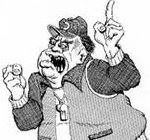Originally produced by Deloitte Consulting but now distributed as freeware, Bullfighter works with Microsoft Word, Outlook and PowerPoint to help you find and eliminate jargon in your documents.
Bullfighter includes a jargon database and an exclusive Bull Composite Index calculator that will allow you to see - in an actual window, on your PC display, live - just how bad a document can be.

This doesn't really do much to improve the quality of your writing, but it sure makes it go much faster. This tool takes keywords you type in and expands it to full text. Among other things, it works extremely well with addresses, and email signatures.
Unlike software-specific text replacement features, Texter runs in the Windows system tray and works in any application you're typing in. Texter can also set return-to markers for your cursor and insert clipboard contents into your replacement text, in addition to more advanced keyboard macros. Did we mention it's free?For the full list, go to Top 10 Writing Tools on the Writing Tips page of Moore Partners








